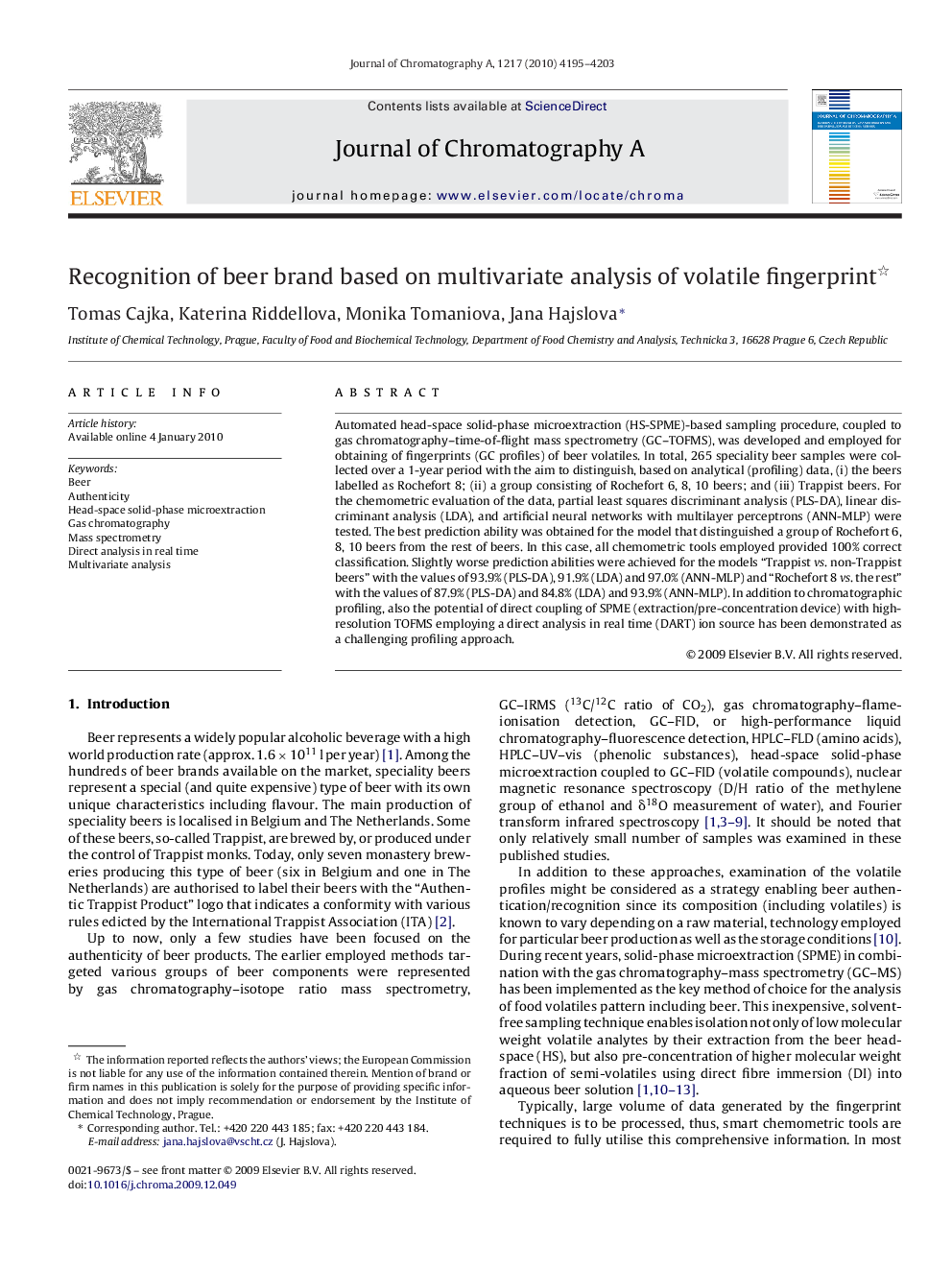| Article ID | Journal | Published Year | Pages | File Type |
|---|---|---|---|---|
| 1205081 | Journal of Chromatography A | 2010 | 9 Pages |
Automated head-space solid-phase microextraction (HS-SPME)-based sampling procedure, coupled to gas chromatography–time-of-flight mass spectrometry (GC–TOFMS), was developed and employed for obtaining of fingerprints (GC profiles) of beer volatiles. In total, 265 speciality beer samples were collected over a 1-year period with the aim to distinguish, based on analytical (profiling) data, (i) the beers labelled as Rochefort 8; (ii) a group consisting of Rochefort 6, 8, 10 beers; and (iii) Trappist beers. For the chemometric evaluation of the data, partial least squares discriminant analysis (PLS-DA), linear discriminant analysis (LDA), and artificial neural networks with multilayer perceptrons (ANN-MLP) were tested. The best prediction ability was obtained for the model that distinguished a group of Rochefort 6, 8, 10 beers from the rest of beers. In this case, all chemometric tools employed provided 100% correct classification. Slightly worse prediction abilities were achieved for the models “Trappist vs. non-Trappist beers” with the values of 93.9% (PLS-DA), 91.9% (LDA) and 97.0% (ANN-MLP) and “Rochefort 8 vs. the rest” with the values of 87.9% (PLS-DA) and 84.8% (LDA) and 93.9% (ANN-MLP). In addition to chromatographic profiling, also the potential of direct coupling of SPME (extraction/pre-concentration device) with high-resolution TOFMS employing a direct analysis in real time (DART) ion source has been demonstrated as a challenging profiling approach.
